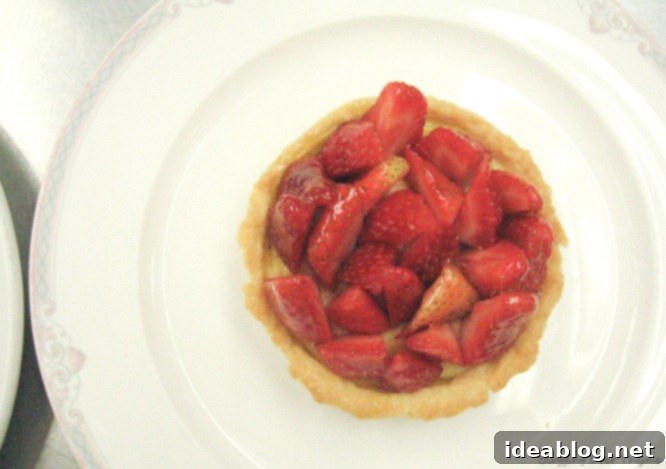An Intense Day in Culinary School: Mastering French Pastry, Precision Vegetable Prep, and Classic Sauces
Today marked one of the most demanding yet rewarding classes we’ve experienced in culinary school. This post will delve deep into a day packed with complex techniques, meticulous preparation, and a menu that truly tested our burgeoning skills. Prepare for an extensive journey through the intricate world of French culinary arts!
Our curriculum for the day featured an exceptionally labor-intensive menu. It wasn’t just about preparing food; it was about understanding the foundational techniques behind each component. The day’s challenges included crafting homemade mayonnaise from scratch, meticulously preparing a classic macedoine salad, assembling a vibrant citrus salad, and delicately baking strawberry tarts.
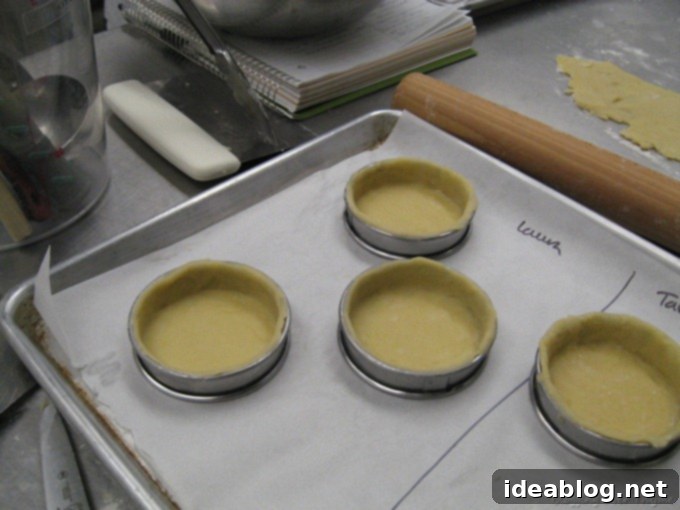
Exploring the Art of Pâte Sucrée: The Sweet Foundation
Our morning lecture commenced with an in-depth introduction to PÂTE SUCRÉE, famously known as “sweet dough.” This classic pastry dough is a cornerstone for many elegant tarts and sweet applications in French patisserie. Distinct from Pâte Brisée, which we mastered last week, Pâte Sucrée boasts a texture akin to a delicate shortbread or a rich cookie. Its primary ingredients include all-purpose flour, cold butter, finely grated lemon zest for aromatic brightness, granulated sugar, pure vanilla extract, and a whole egg to bind it all together.
Adhering to our school’s philosophy, we learned to mix this delicate dough by hand. This hands-on approach is crucial for developing a tactile understanding of the dough’s proper texture and consistency, ensuring we can achieve perfect results even without the aid of modern mixers in the initial stages of our training. Pâte Sucrée is notably more buttery than other doughs and consequently more prone to cracking during handling. To counteract this, we were taught to work swiftly and to allow the dough to chill sufficiently in the refrigerator before it was rolled out and carefully formed into petite 3-inch tart molds. Once molded, the dough was meticulously docked (pierced with a fork) to prevent puffing and then blind-baked with dried beans at a precise temperature of 350 degrees Fahrenheit, setting the stage for our delicious tarts.
While its delicate nature makes it susceptible to cracking, a significant advantage of Pâte Sucrée is its remarkable pliability. It is considerably easier to mold into intricate shapes and, should any cracks appear, can be patched quite effortlessly, making it forgiving for aspiring pastry chefs.
A Culinary Symphony: The Day’s Diverse Menu
After our intensive dough preparation, we returned to the lecture theater. Chef Brian, with the capable assistance of Ashley, meticulously demonstrated the remainder of the morning’s ambitious menu. Each dish presented an opportunity to learn fundamental French techniques, from precise knife cuts to delicate emulsifications:
LA SALADE DE CITRUS (Citrus Salad)
LA VINAIGRETTE À L’ORANGE (Orange Vinaigrette)
LA MACÉDOINE DE LÉGUMES (Vegetable Salad with Mayonnaise)
LA TARTELETTE AUX FRAISES (Strawberry Tart)
Mastering Precision: La Macédoine de Légumes
Let’s begin with the macédoine, a dish that, despite its seemingly humble description, proved to be incredibly time-consuming and technique-driven. Our interpretation of the macédoine comprised a vibrant medley of finely diced carrots, turnips, potatoes, sweet peas, and tender French green beans. Each vegetable had to be cut into precise 1/4-inch cubes – a true test of knife skills. These perfectly uniform vegetables were then gently tossed with freshly chopped parsley and our velvety homemade mayonnaise, creating a harmonious blend of flavors and textures.
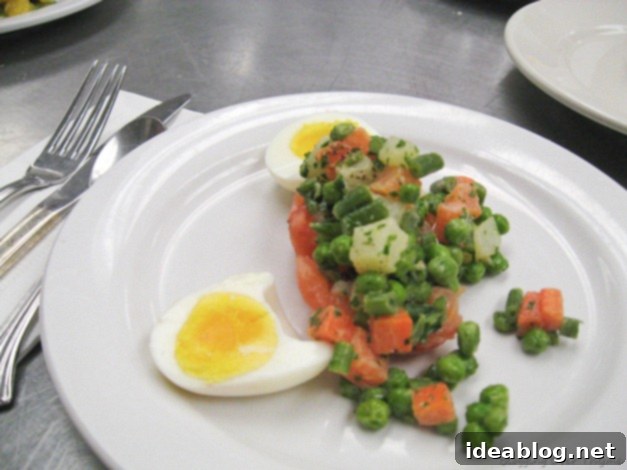
To elevate its presentation, the macédoine was elegantly served in a hollowed-out fresh tomato, accompanied by perfectly sliced hard-boiled eggs. This meticulous presentation showcased the attention to detail expected in professional kitchens.
A significant lesson from this dish revolved around the cooking of vegetables. Given that each vegetable possesses a unique cooking time, we were rigorously drilled on the importance of cooking each one separately and in advance when preparing a salad. This ensures that every vegetable achieves its optimal texture – tender but still firm – within the final composition of the salad, preventing overcooked mushiness or undercooked crispness.
We even dedicated a good five minutes to a passionate discussion about what constitutes a ‘properly cooked’ Haricot Vert, or green bean. Our chef presented three distinct batches: one noticeably under-cooked, one cooked precisely to his exacting standards, and a third prepared to the school director’s specific preference. It was a revelation to learn that even a slight crunch in a green bean is often deemed improperly cooked in classical French cuisine! Who knew green beans could be the subject of such intense culinary debate?
Furthermore, we learned a critical rule for cooking various vegetables: some benefit from being added directly to vigorously boiling water, while others require a gentle start in cold water that is then brought to a boil. This method ensures consistent cooking throughout. For instance, delicate green vegetables like asparagus, peas, and green beans should plunge into boiling water! Conversely, dense root vegetables such as turnips, potatoes, and carrots should be placed in cold water and then brought to a boil. Failing to follow this distinction can result in vegetables where the exterior is overcooked and disintegrating, while the interior remains raw or undercooked. Oh, and a vital tip: each batch of cooking water must be generously salted, much like ocean water, to preserve the vegetables’ crispness and vibrant color.
Once perfectly cooked, each vegetable was immediately plunged into an ice bath to halt the cooking process and preserve its texture and color. They were then carefully spread onto a towel-lined baking sheet to dry thoroughly before being incorporated into the salad. Adding another layer of complexity, we were required to change the cooking water for each individual vegetable, starting the boiling process anew. This meticulousness, while seemingly excessive, reinforces consistency and flavor. Yes, it certainly sounded, and was, incredibly time-consuming!
The Secret to a Perfect Hard-Boiled Egg
Our culinary journey also included learning our school’s definitive method for cooking the perfect hard-boiled egg. While many advocate for placing eggs in cold water and bringing them to a boil, we were taught a different, highly precise technique. Eggs, preferably close to room temperature to prevent cracking, are carefully lowered into vigorously boiling water and cooked for an exact duration of 12 minutes. Immediately after, they are transferred to an ice bath, which prevents further cooking and facilitates easier peeling. Our assistant confidently assured us that this method yields consistently perfect results, whether you’re preparing a single egg or a batch of sixty. I’ve tried it since, and it truly works flawlessly!
Crafting Velvety Smooth Mayonnaise from Scratch
Another impressive technique we mastered today was the creation of homemade mayonnaise. It’s truly astonishing to witness how a simple emulsion of an egg yolk, a touch of Dijon mustard, neutral canola oil, and a squeeze of fresh lemon juice can transform into such a rich, stable, and bodied condiment. While I’ve never considered myself a “mayonnaise person” and wasn’t particularly eager to taste it, the difference between this homemade version and its store-bought counterpart was astounding. To my own surprise, I actually ate every bit of it, a testament to its fresh, vibrant flavor.
Perhaps I’ll capture the process on video and share it on the blog for those interested in trying this rewarding technique at home!
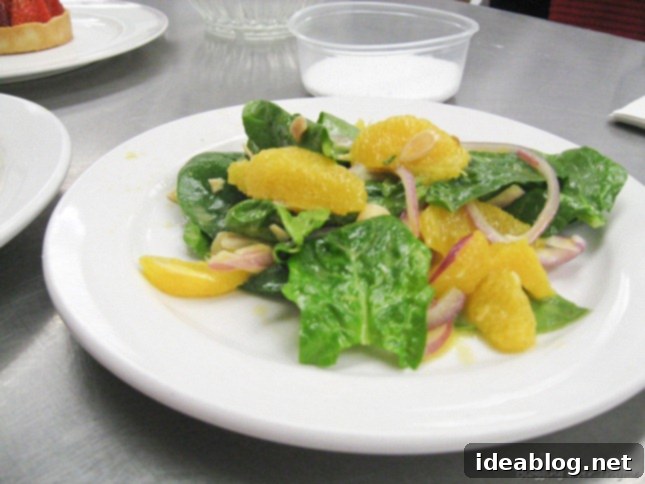
The Art of Peler à Vif: La Salade de Citrus
Our menu also featured a refreshing citrus salad, beautifully complemented by a zesty orange vinaigrette. The primary objective behind this dish was to practice a quintessential French knife skill known as PELER À VIF. This term translates literally to “cut to the quick” or “to the life,” and it describes the meticulous process of segmenting citrus fruit. It involves carefully trimming off both ends of the orange, then precisely removing the entire peel and bitter white pith using a boning knife, following the natural curve of the fruit.
Subsequently, we used the knife to glide between the orange membranes, liberating each individual suprême—the pristine, membrane-free citrus segments. After carefully extracting all the supremes, we ingeniously utilized the remaining orange structure by squeezing it to extract every last drop of juice. This fresh juice then formed the base for a quick yet flavorful vinaigrette, enhanced with a hint of Dijon mustard, finely minced garlic, and a splash of elegant Sherry vinegar.
The supremes and vinaigrette were then tossed with tender spinach leaves, which we painstakingly de-leafed by hand and washed thoroughly, along with very thinly sliced red onion for a subtle bite, and toasted almonds for a delightful crunch. The combination of sweet, tart, savory, and nutty elements made this salad truly exceptional!
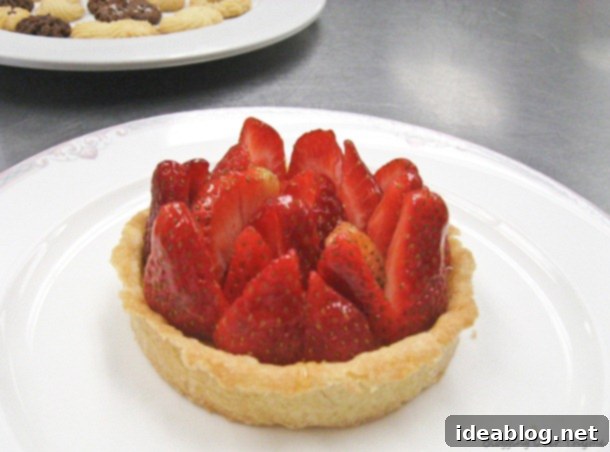
Elegance in Every Bite: La Tartelette aux Fraises
To further challenge our pastry skills, we finalized the preparation of our Pâte Sucrée molds to create exquisite strawberry tarts. This was one item on the menu I was particularly excited about! To fill these delicate tart shells, we delved into the creation of homemade CRÈME PÂTISSIÈRE (Pastry Cream)—a fundamental component of many French desserts. This rich, creamy filling is composed of precise proportions of:
- Fresh egg yolks
- Whole milk
- Granulated sugar
- Cornstarch (as a thickening agent)
- Pure vanilla extract
Having never made pastry cream before, this technique was entirely new to me. The process involves vigorously whisking (using a stiff whisk to minimize air incorporation) egg yolks, sugar, and cornstarch together until light and creamy. This mixture is then carefully tempered by slowly streaming in warm whole milk, gradually raising its temperature without scrambling the eggs. The entire mixture is then transferred to the stovetop and cooked over medium-low heat, stirring continuously, until it begins to bubble and thickens significantly. This bubbling indicates that the cornstarch has been sufficiently cooked out, ensuring a smooth, stable, and glossy cream.
Once cooked, we were instructed to push the pastry cream through a fine-mesh sieve. This crucial step removes any potential lumps, ensuring an impeccably smooth texture, and also catches any tiny bits of cooked egg that might have formed if the tempering was imperfect or if the cream was cooked too quickly. The vanilla was then stirred in once the cream had cooled—a vital detail, as adding vanilla over heat can impart a bitter flavor. Finally, the cooled, silky pastry cream was expertly piped into our blind-baked tart shells.
While I’ve certainly enjoyed pastry cream tarts in the past where the cream dominated, we learned a valuable lesson today: the tart shell should only be filled less than halfway with pastry cream. This philosophy ensures that the fruit remains the star of the show, allowing its natural freshness and beauty to shine, rather than being overshadowed by the shell or the cream. To further emphasize this, our fresh strawberries were meticulously arranged standing point-up, much like a vibrant basket of fruit, ensuring they undeniably stole the spotlight.
For a final touch of elegance, we gently brushed the finished tarts with a warm apricot glaze, adding a beautiful sheen and enhancing their overall presentation.
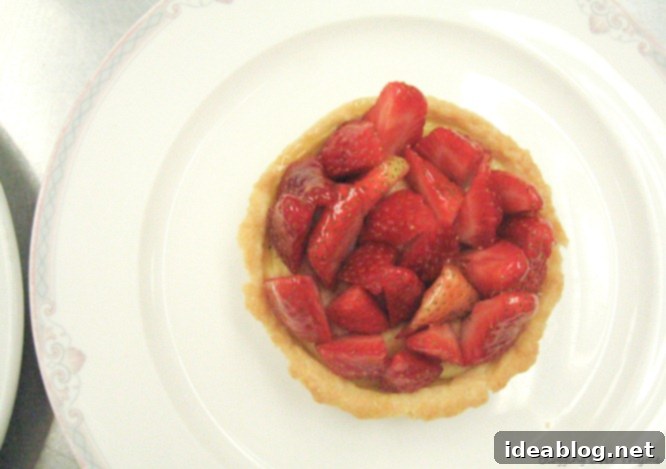
The Culinary Marathon: Time Management and Pressure
All these intricate preparations culminated in a plating frenzy, as everything had to be ready for lunch service, scheduled for a strict 11 AM today. Unfortunately, time seemed to evaporate for all of us in the kitchen, and we were granted a brief extension to 11:10, which eventually stretched to 11:30. By this point, I had barely managed to arrange all the strawberries onto our tarts. The biggest challenges of the day included simultaneously monitoring multiple cooking processes, coordinating with a newly assigned partner, diligently clearing our workstations as we progressed, and ultimately making sufficient space to meticulously plate and present SIX individual plates of each distinct dish for evaluation.
Today, we were once again paired with a randomly assigned work table partner. However, our shared responsibility was limited to combining and cooking our diced vegetables together. Beyond that, each of us had to individually manage our time to dedicate focus and practice to every single item on the extensive menu, ensuring we fully grasped each new technique introduced.
I distinctly remember feeling a bit frazzled by the time lunch was finally served! I also wished we had been allocated more time to focus purely on the artistry of plating and presentation, as my tarts, in particular, felt rather hastily assembled given the tight deadline. However, a much-needed confidence boost arrived when my instructor unexpectedly grabbed one of my tarts, darted off without explanation, and later returned to inform me that he had proudly shown it to the school director, Francois, who was reportedly very impressed! This unexpected validation was a wonderful lift after such a demanding morning.
Thankfully, our chef later provided some much-needed perspective, explaining that today is universally considered one of the most challenging days in Phase I of the program, especially considering we have only been in culinary school for a mere four days. What a relief! I try to deliberately avoid contemplating the daunting thought that the intensity will only escalate as the program progresses, but moments like these provide invaluable insights and encouragement.
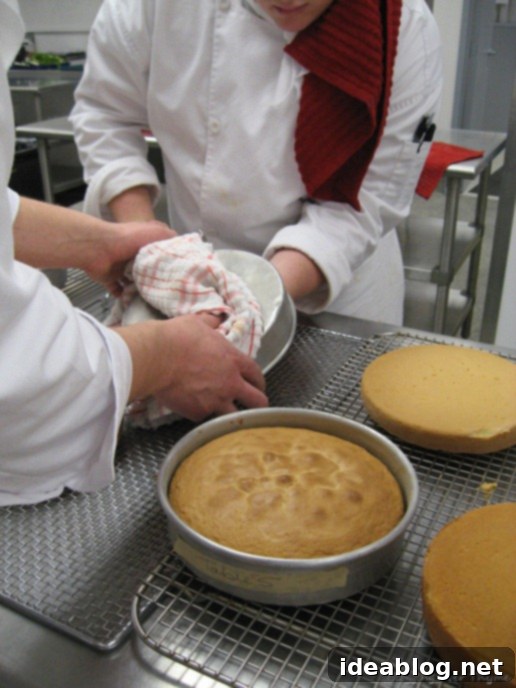
Afternoon Delight: Learning Genoise, a Classic Sponge Cake
After a quick 15-minute lunch break, we swiftly transitioned back into action, beginning the laborious task of trimming chicken bones for another batch of rich stock. This time, instead of the generous hour we had previously, we were challenged to complete the same quantity of trimming in a brisk 30 minutes. As if that weren’t enough for one day, the afternoon brought yet another captivating demonstration! We were introduced to the art of making GENOISE—a wonderfully light, airy, and spongy cake, foundational in French patisserie. Its simple yet elegant composition includes flour, sugar, whole eggs, melted butter, and a touch of vanilla.
The key to Genoise lies in its unique preparation method. The eggs and sugar are tirelessly whisked—to the point where your arm feels ready to drop off—over a double boiler. This gentle heat warms the mixture, allowing it to become voluminous and stable, forming what chefs describe as “ribbons” when lifted. While various methods exist for making genoise, such as the creamed or sponge methods, today we focused specifically on the whole egg sponge method, highlighting the distinct technique of whisking whole eggs for aeration.
I anticipate learning all the subtle differences between these methods soon enough!
Genoise is characterized by its exceptionally light texture, a somewhat subtle, eggy flavor, and is predominantly used for delicate layer cakes, often paired with rich buttercream or fresh fruit. Another fantastic attribute of this cake is its excellent freezing quality, making it a versatile staple in any professional kitchen.
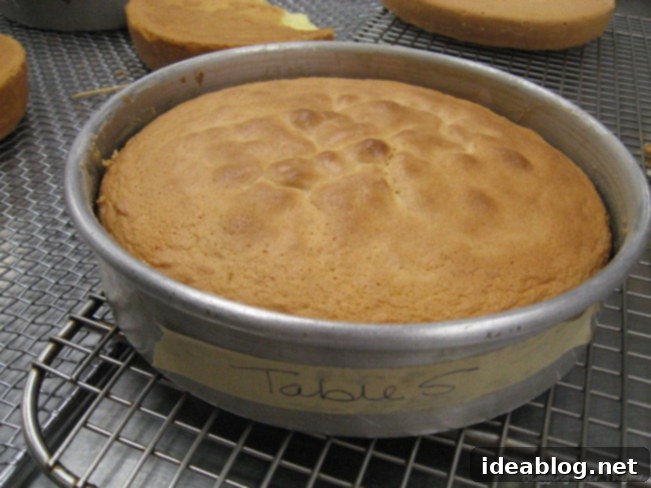
The Day Concludes: Challenges and Reflections
By this point, it was already 2:30 PM, officially marking the end of our Phase I day. However, the day’s responsibilities weren’t quite over; we still had the crucial task of thoroughly cleaning the kitchen, leaving it spotless for the next day. We finally finished up around 3:30 PM. Stepping outside, I was greeted by the unexpected sight of snow falling—a big surprise, as I have no window access throughout the day while in the kitchen!
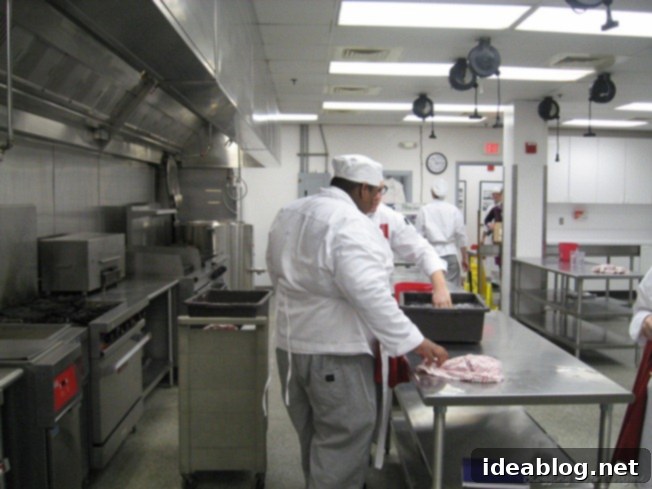
If I was somehow able to hold your attention through this detailed account, you truly deserve your own medal—or perhaps, a slice of Genoise! Goodness, and I thought my previous posts were long; this day truly redefined intensity and volume of learning.
I’m planning to compile some actual recipes with precise procedures and ingredient amounts this coming weekend, especially for those curious to try these classic techniques at home. Stay tuned for those!
Thank you once again to each and every one of you for all your incredibly positive comments and encouraging feedback on my culinary school posts! I have genuinely enjoyed sharing these experiences and insights with you so far. Your support makes this journey even more rewarding.
